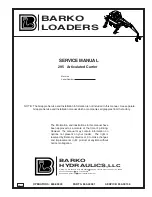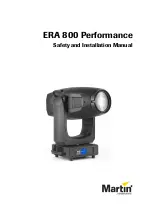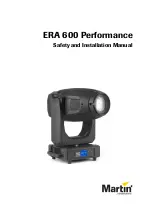
4 Mounting
Tightly screw the light effect unit via the mounting
bracket (1) to a suitable place, e. g. to a cross bar
or a lighting stand.
To adjust the unit, release the locking screws (2).
Adjust the desired inclination of the unit, and then
retighten the screws.
5 Setting into Operation
Connect the mains cable supplied to the mains jack
(9) and the plug to a socket (230 V~/ 50 Hz). Thus,
the unit is switched on and the operating mode last
adjusted is activated. To switch off the unit, discon-
nect the mains plug.
For a more convenient operation, it is recom-
mended to connect the unit to a socket which can
be switched on and off via a light switch.
Caution:
Do
not
connect the unit to the mains volt-
age via a dimmer!
5.1 Switching the display on /off
To switch off the display (4), first press the button
FUNC (7): The display shows
. Then press
the button UP or DOWN (8): the display will be
extinguished.
To switch on the display again, press any button
[MODE (6), FUNC (7), UP or DOWN (8)]: The dis-
play shows
. Then press the button MODE so
that the display shows the operating mode again.
6 Operation without Controller
For the operation without controller three modes
G1 to G3 are available:
–
Music control
If music is played at sufficient volume with a clear
rhythm in the bass range, the movements and
changes of the light patterns will be synchronized
to the beat of the music via the integrated micro-
phone (5). Advance the control (13) for the micro-
phone sensitivity clockwise so that the unit
responds to the music as desired. When chang-
ing the volume at the music system, also the sen-
sitivity of the microphone has to be adapted
accordingly.
–
Automatic mode
Automatic light show: The movements and
changes of the light patterns run automatically.
–
Basic setting (reset)
Reset of the unit: The control motor goes to a
defined starting position and the LEDs radiate a
fixed light pattern.
To switch the unit to operation without controller,
press the button MODE (6) so many times until
,
or
is shown on the display (4).
Then select the desired mode from the three
modes with the button UP or DOWN (8).
Note:
The modes G1 and G2 do not function when
a DMX signal is present at the input DMX INPUT
(11).
6.1 Master /slave operation
Several LED-320RGBW units may be intercon-
nected to control all further slave units via a master
unit.
1) Connect the output DMX OUTPUT (12) of the
master unit via a 3-pole XLR cable to the input
DMX INPUT (11) of the first slave unit.
2) Connect the output DMX OUTPUT of the first
slave unit to the input DMX INPUT of the second
slave unit etc., until all units are connected in a
chain.
3) The slave units must be adjusted to slave oper-
ation. To switch a slave unit to slave operation,
press the button MODE (6) so many times until
is shown on the display (4).
7 DMX Control
For operation via a light controller with DMX512
protocol (e. g. DMX-1440 or DMX-510USB from
“img Stage Line”) the light effect unit is equipped
with three DMX control channels. The functions of
the channels and the corresponding DMX values
can be found in chapter 9.1.
7.1 Connection
As a DMX interface the unit is equipped with 3-pole
XLR connections with the following contact config-
uration: pin 1 = ground, 2 = DMX-, 3 = DMX+
WARNING
Never look directly into the light
source, this may cause eye damage.
Please note that fast changes in light-
ing may trigger epileptic seizures
with photosensitive persons or per-
sons with epilepsy!
WARNING
Mount the light effect unit safely and
expertly. If the unit is installed at a
place where people may walk or sit
under it, additionally secure it, e. g. by
a safety rope. Lead the safety rope
through the safety lug (3) and fix it so
that the maximum falling distance of
the unit will not exceed 20 cm.
8
GB









































